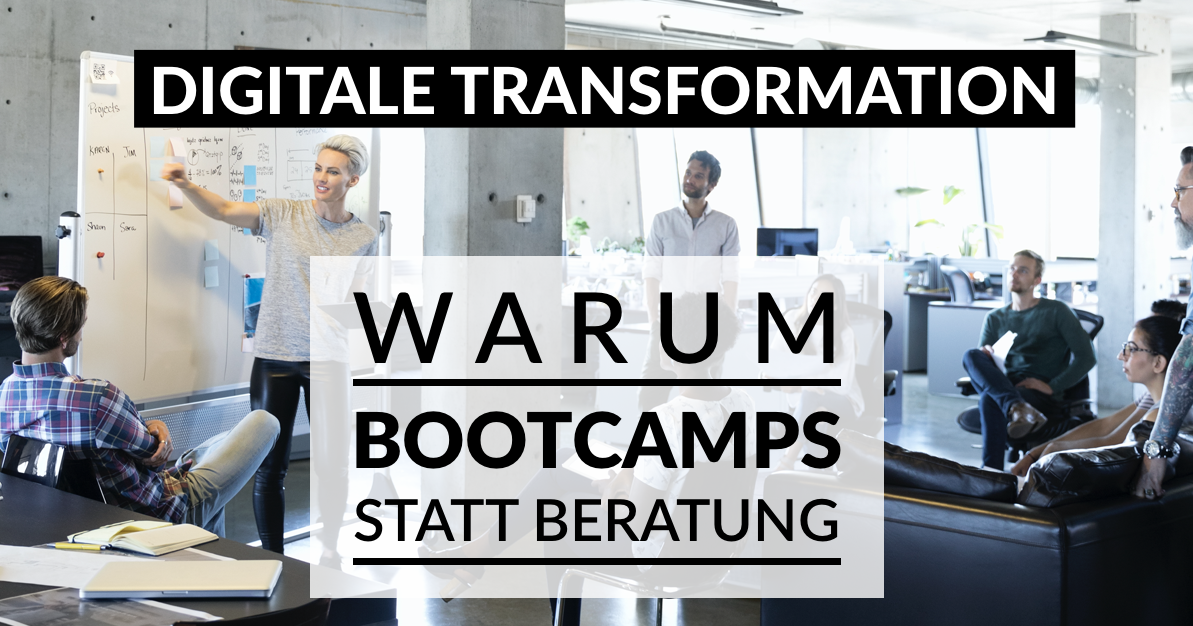Digitalization or Transformation?
Are there any differences between Digitalization and Digital Transformation? “It’s all the same, it’s all just an exaggeration”, “Old wine in new bottles”, “It doesn’t matter, the main point is that we finally get started!” Such and similar answers show how different the ideas and expectations are about the terms. We often happily talk at cross purposes, or quickly get into heated discussions, which sometimes take on strange traits. For some, it’s new work or something to do with start-ups, for others it’s block chain and cloud applications, and yet others think of it as a change in leadership. However: It is always about change.
More accuracy in language would not only help in mutual understanding, but also contribute to greater clarity in thinking and acting. And this is particularly important in change: without clarity, the situation and objectives remain vague. This makes it hard to set sails and maintain course.
Here is an attempt to make a very pragmatic distinction, without falling into scientific discussions.
DIGITALIZATION
- The focus is on increasing the efficiency of existing business.
- Digital technologies are used to optimize existing processes.
- The target and scope of the required change activities can be outlined relatively clearly.
DIGITAL TRANSFORMATION
- The focus is on further developing the company for future business.
- Based on the progress made in digitalization, this now affects all processes, structures, competencies and leadership, right down to the customer.
- Only the goal can be defined clearly. The scope and the necessary steps for further development become visible only during the transformation.
With this differentiation, a better mapping of specific topics is now possible and there is much more clarity about expectations and objectives. This clarity helps all parties involved in both orienting and assessing impact. Leaders can thus more easily win over employees and shape change together.
With digitalization, the focus is on increasing the efficiency of existing business. For example, consistently digitalized and therefore paperless order processing has reduced the workload of Mader’s service team by 30% and shortened invoicing from weeks to hours. Another example is the digitalization of warehouse management, which significantly enables leaner and more efficient logistics processes. All this helps to save costs, time and storage space. And the company not only benefitted in economic terms; employee and customer satisfaction increased significantly, too. Time-consuming searches through paper stacks used to be commonplace at Mader, but now they are a thing of the past.
In the field of value creation, digitalization is often significantly further developed than in offices. At Schmalz, for example, automated production systems can accept orders for customized suction pad foam parts from the customer’s CAD system via digital interfaces and start production immediately. Here, digitalization has been implemented all the way to the customer interface. This affected not only this one production line, greatly increasing its flexibility, but it had consequences also for the rest of the company. Following digitalization, transformation simply becomes the next logical step in business.
To increase on-demand sales with such automated production systems demands greater flexibility throughout the company. The greater volatility in demand can only be met by more flexible logistics, adjustments in purchasing and even working models.
Not all operations can be automated and digitalized. People in the company will remain important. Experience shows, that if they can help shaping the change of their own work, the transformation will get nicely underway. The most important step in this process is to achieve clarity about the goal and to pursue the path together with the people. Sometimes, the right words are as good as gold.
Image: Free-Photos on pixabay.com

Where to start? Kickstart your Digital Transformation with our tailor-made BOOTCAMPS.
Find case studies, good practices and breakthrough concepts for this challenge in our book FUTURE LEGENDS – Business in Hyper-Dynamic Markets.




